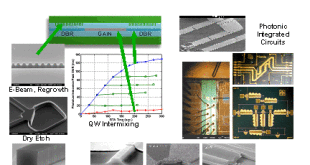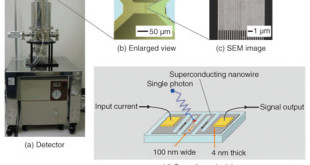Introduction: Indium Phosphide (InP) technology is propelling the field of photonics into a new era, unlocking incredible possibilities for various industries. In this blog article, we will delve into the world of InP technology, exploring its market potential and the diverse applications where it is making a significant impact. From …
Read More »Optical Modules and Transceivers: Unleashing the Power of High-Speed Optical Communications”
Introduction: In today’s digital age, where data transmission and connectivity are paramount, optical modules and transceivers have emerged as critical components for high-speed and reliable optical communications. These advanced technologies play a vital role in various applications, ranging from data centers and telecommunications networks to emerging technologies like 5G and …
Read More »Achieving Precision: Calibration and Control of Photonic Integrated Circuits
Introduction In the world of photonics, where light-based technologies are rapidly advancing, Photonic Integrated Circuits (PICs) have emerged as a cornerstone of numerous applications. These compact and efficient devices integrate various optical components onto a single chip, enabling functionalities such as optical communication, sensing, and signal processing. However, to harness …
Read More »Material platforms for Photonic integrated circuits (PIC) enable LiDAR, quantum and neuromorphic computing
A photonic integrated circuit (PIC) or integrated optical circuit is a device that integrates multiple (at least two) photonic functions and as such is similar to an electronic integrated circuit. The major difference between the two is that a photonic integrated circuit provides functions for information signals imposed on optical …
Read More »Single photon detector (SPD) critical technology for quantum computers and communications, and submarine detection
The process of detecting light—whether with our eyes, cameras or other devices—is at the heart of a wide range of civilian and military applications, including light or laser detection and ranging (LIDAR or LADAR), photography, astronomy, quantum information processing, medical imaging, microscopy and communications. Light is also being used in …
Read More »Optical Amplifiers
The transmission loss of the light passing through the optical fiber is a very small value of less than 0.2 dB per km with a light wavelength in the 1,550 nm band. Therefore clearest optical fibers can transmit signals more than 100 kilometers without amplification-much farther than copper wires. When …
Read More »Optical Science and Engineering
Optics is the branch of physics that studies the behaviour and properties of light, including its interactions with matter and the construction of instruments that use or detect it. Optics usually describes the behaviour of visible, ultraviolet, and infrared light. Because light is an electromagnetic wave, other forms of electromagnetic …
Read More »Automotive Optoelectronics Market
Optoelectronic technology is a new technology formed by the combination of photon technology and electronic technology. Optoelectronics is the field of technology concerned with electronic device application to the sourcing, detection and control of light. Optoelectronics is described as “a device that responds to optical power, emits or modifies optical …
Read More »Directed Energy Weapons technology and Market trends
Directed energy refers to a technology that produces a beam of concentrated electromagnetic energy, including microwaves, radio waves, lasers, and particle beams. Some of the common product variants include high-energy laser weapons, high-power radiofrequency or microwave devices, and charged or neutral particle beam weapons. These weapons offer numerous benefits over conventional …
Read More »Superresolution imaging
For centuries, light microscopy has greatly facilitated our understanding of how cells function. In fact, entire fields of biology have emerged from images acquired under light microscopes. Indeed, one major element that makes light microscopy so powerful in biological research is the development of various staining methods that permit the …
Read More » International Defense Security & Technology Your trusted Source for News, Research and Analysis
International Defense Security & Technology Your trusted Source for News, Research and Analysis


